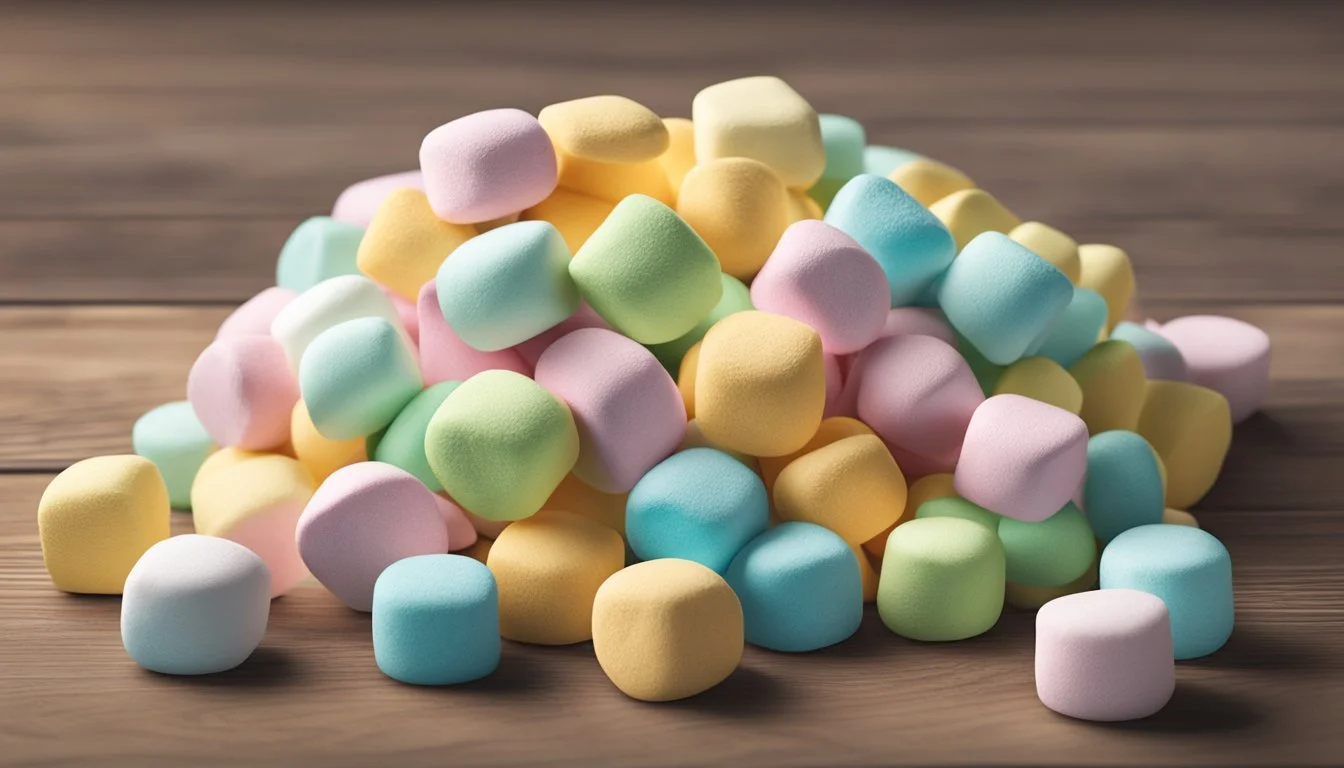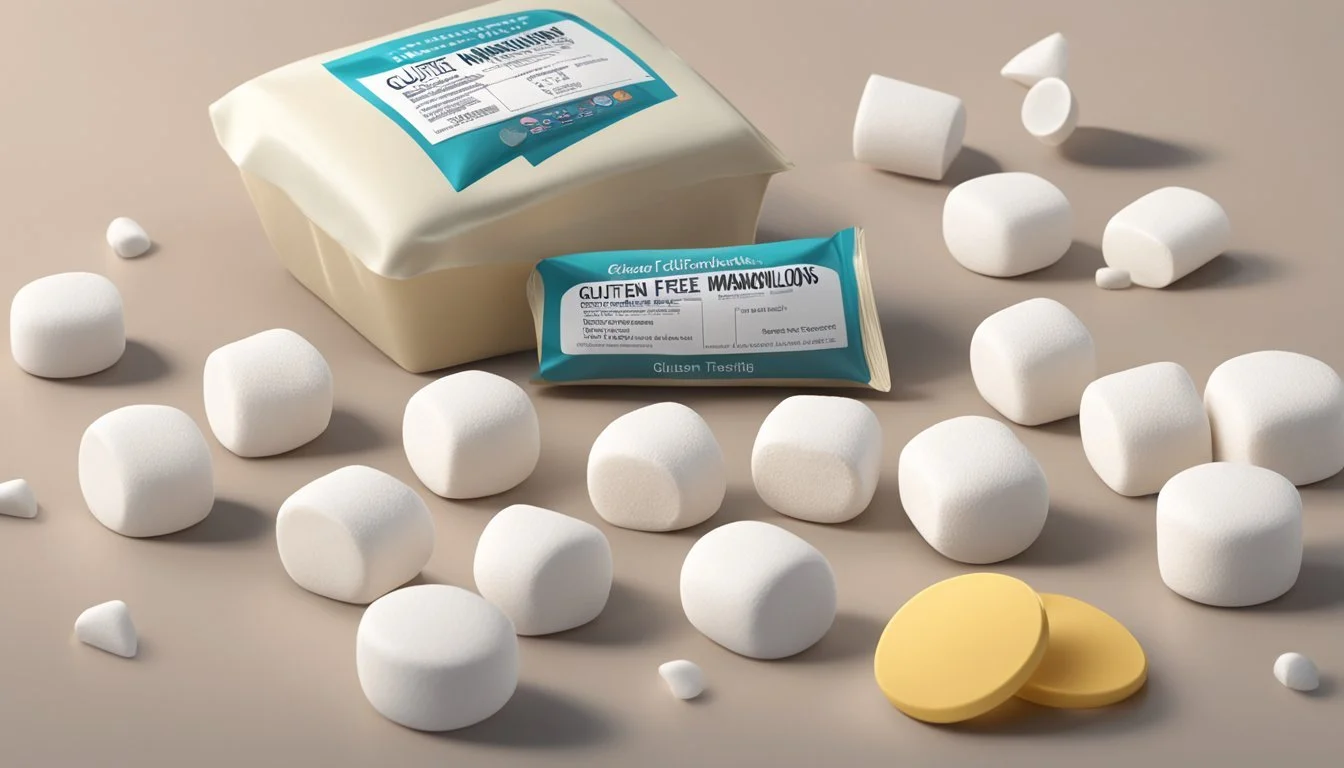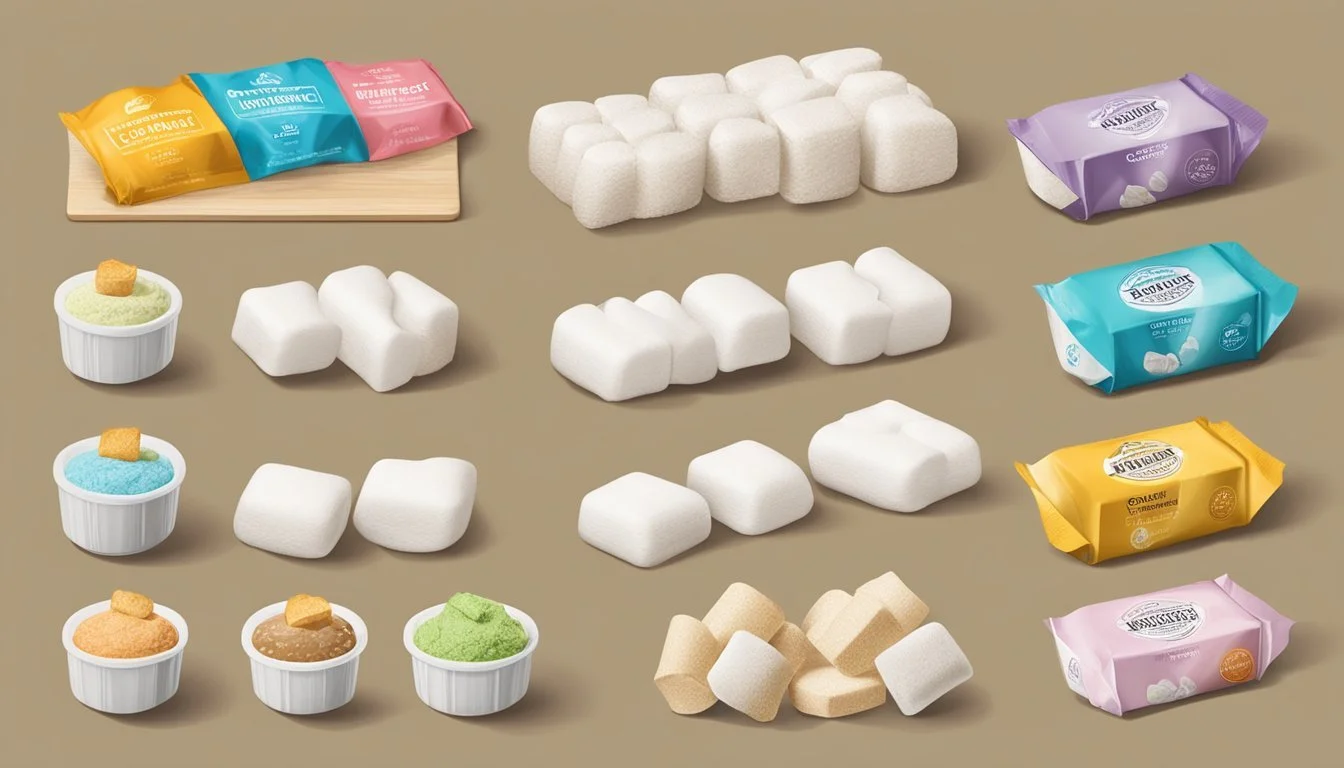Are Marshmallows Gluten-Free?
Uncovering the Sweet Truth
Marshmallows are a popular sweet treat, often associated with campfires and hot chocolate. With the rise in gluten-related disorders and the increased popularity of gluten-free diets, consumers are more conscious than ever about the ingredients in their foods. Marshmallows may appear to be primarily sugar-based, but questions often arise as to whether they are safe for a gluten-free diet.
Most marshmallow brands in the United States are considered gluten-free. Ingredients typically include sugar, corn syrup or tapioca syrup, modified cornstarch, and gelatin—all of which do not contain gluten. However, individuals with celiac disease or non-celiac gluten sensitivity may still have concerns regarding cross-contamination or the presence of trace gluten in these products.
Manufacturers like Doumak claim all of their marshmallows are gluten-free, and they produce for several store brands, including those of Walmart and CVS. Other well-known brands such as Kraft Jet-Puffed also assert that their marshmallows are gluten-free and pose no risk of cross-contamination during the manufacturing process. Despite the general safety for gluten-free consumers, it is always recommended to check the packaging for the gluten-free label and review ingredient lists for any items that could suggest the presence of gluten.
Understanding Gluten and Celiac Disease
In this section, we decode the relationship between gluten, its impact on those with celiac disease, and how it differs from gluten sensitivity. Understanding these distinctions is critical when considering the suitability of foods like marshmallows for certain diets.
What is Gluten
Gluten refers to a group of proteins, primarily gliadin and glutenin, found in wheat, barley, rye, and triticale. Gluten imparts elasticity to the dough, allowing bread to rise and providing a chewy texture. In food production, it acts as a stabilizer, thickener, and can enhance flavor. However, gluten can pose health issues for certain individuals.
Overview of Celiac Disease
Celiac Disease, a genetic autoimmune disorder, affects about 1% of the population. When individuals with celiac disease consume gluten, their immune system responds by attacking the lining of the small intestine. This reaction leads to inflammation and damage to the intestinal villi, which are responsible for nutrient absorption. Symptoms of celiac disease can range from gastrointestinal distress to neurological issues and joint pain.
Gluten Sensitivity vs. Celiac Disease
Gluten Sensitivity, also referred to as non-celiac gluten sensitivity (NCGS), shares symptoms with celiac disease but does not cause the same immune response or intestinal damage. It's important to distinguish between gluten sensitivity and celiac:
Celiac Disease
Autoimmune disorder.
Genetic predisposition required.
Diagnosed through blood tests and intestinal biopsy.
Requires a strict gluten-free diet as the only treatment.
Gluten Sensitivity
Not an autoimmune or allergic response.
No known markers for definitive diagnosis.
Symptoms improve with reduced gluten intake.
A gluten-free diet may alleviate symptoms, but the intolerance levels vary.
People with celiac disease must adhere to a strict gluten-free diet, ensuring foods contain less than 20 parts per million (ppm) of gluten, the threshold to qualify as gluten-free.
The Basics of Marshmallows
Marshmallows, a popular confection, consist of specific ingredients and follow a particular manufacturing process. Recognizable brands ensure consistent quality and taste for these sweet treats.
Marshmallow Ingredients
The primary ingredients in marshmallows include:
Sugar: Provides sweetness and structure.
Corn Syrup: Adds viscosity and prevents crystallization of sugar.
Water: Helps dissolve sugar and gelatin; facilitates foaming.
Gelatin: A protein that provides the marshmallows with their characteristic fluffy texture.
Air: Incorporated during the whipping process to create the marshmallows' spongy form.
Some brands might include additional flavorings, such as vanilla extract, to enhance taste.
Manufacturing Process
Marshmallow production involves several steps:
Dissolving Sugar and Gelatin: Sugar, corn syrup, and gelatin are dissolved in water and heated.
Whipping: The mixture is vigorously whipped, incorporating air and increasing volume.
Molding/Forming: The mixture is then cast into molds or extruded and cut into the desired sizes and shapes.
Curing: The marshmallows cure and stiffen, often overnight, to attain their final texture.
Packaging: Once cured, marshmallows are packaged and prepared for distribution.
This process can vary slightly among different manufacturers but generally follows this pattern.
Common Marshmallow Brands
A few notable brands dominate the marshmallow market:
Jet-Puffed Marshmallows: Known for their versatility and wide availability.
Dandies Marshmallows: Popular for being a plant-based alternative without animal gelatin.
Campfire Marshmallows: Established for their traditional flavor and use in classic recipes.
Peeps: Recognizable for their festive shapes and colors, especially during certain holidays.
These brands represent the spectrum of marshmallow varieties, catering to diverse consumer preferences and dietary needs.
Gluten Content in Marshmallows
When discussing marshmallows, it's crucial to explore not just their gluten-free status, but also the potential risks of gluten contamination. This section breaks down the aspects to consider.
Are Marshmallows Gluten-Free
Marshmallows are typically gluten-free as their fundamental components consist of sugar, water, and gelatin. These ingredients do not contain gluten, a protein found in wheat, barley, and rye. Most commercially produced marshmallows can safely be categorized as gluten-free, making them suitable for a gluten-free diet.
Potential Sources of Gluten in Marshmallows
While the base ingredients are safe for those avoiding gluten, additional elements such as flavors or mix-ins could introduce gluten into marshmallows. Furthermore, some marshmallows may use wheat starch as a processing aid or for texture, which is another potential source of gluten. Consumers should diligently check labels for mentions of wheat, barley, rye, or "may contain gluten" statements.
Understanding Cross-Contamination
Cross-contamination is a critical consideration for individuals with gluten sensitivities. Even if marshmallows are made with gluten-free ingredients, they can still come into contact with gluten through shared facilities or equipment. It's always advised to look for marshmallows certified as gluten-free or those produced in a dedicated gluten-free environment to minimize the risk of cross-contamination.
Labeling and Certification
Consumers rely on clear and regulated food labeling to identify products that are safe for those with celiac disease or gluten sensitivities. The presence of a "gluten-free" label or certification on the packaging plays a critical role in this process.
Gluten-Free Labels Explained
"Gluten-free" labels on food packaging indicate that a product does not contain gluten grains such as wheat, barley, or rye, or any ingredients derived from these grains. The FDA has set forth specific guidelines for these labels:
A product labeled "gluten-free," "free of gluten," "no gluten," or "without gluten" must contain less than 20 parts per million (ppm) of gluten.
Nutrition labels help consumers identify if any gluten-containing ingredients are used in the food.
Manufacturers may voluntarily use gluten-free claims if their products meet the criteria set by the FDA.
Certification and Standards
A "certified gluten-free" label signifies that the product has met strict standards set by independent organizations. They assess products for gluten content and evaluate the potential for cross-contact with gluten during production. Key points include:
Certifications are usually depicted by specific symbols or logos on the product's packaging.
Organizations providing gluten-free certification have varying standards, but most require testing of products to ensure gluten levels are below 20 ppm, in line with FDA guidelines.
It's essential for consumers to understand the meaning of these labels and certifications when making safe dietary choices.
Safe Brands and Products
Many marshmallows available on the market are naturally gluten-free, although it's always wise for consumers to confirm by checking labels.
Trusted Gluten-Free Marshmallow Brands
Various brands have established a reputation for providing gluten-free marshmallows. Below is a list highlighting some of these trusted brands:
Doumak: All of their marshmallows, including the Campfire brand, are gluten-free.
Kraft Jet-Puffed: Kraft's products are generally considered gluten-free, but always check packaging for the latest ingredient information.
Dandies: Known for their vegan and gluten-free marshmallows, suitable for a variety of dietary needs.
Trader Joe’s: Offers their own brand of marshmallows that are free from gluten-containing ingredients.
Great Value: This is Walmart’s store brand, and according to customer service information, these marshmallows are gluten-free.
Reading Ingredient Lists and Labels
One should review product labels for key phrases like "gluten-free" or check for potential gluten-containing additives. Here are some tips:
Look for explicit "gluten-free" labeling where possible.
Check for warnings of shared facilities or equipment that might introduce cross-contamination with gluten.
Be cautious of additives which might not always be clearly defined on the label; consult the manufacturer if necessary.
Associated Food Products
When considering marshmallow-associated products, it's essential to be aware that they range from traditional desserts to modern confections. Dietary preferences and restrictions, such as a gluten-free diet, often influence the inclusion of marshmallows in various recipes and alternative sweet products.
Marshmallow-Containing Recipes
Recipes that traditionally include marshmallows are diverse. S'mores, a campfire staple, normally require graham crackers, chocolate, and marshmallows. However, those on a gluten-free diet must ensure that the graham crackers used are gluten-free. Rice crispy treats, another popular confection, typically combine rice cereals with marshmallows. Consumers should verify that the cereal is gluten-free since some brands may contain malt flavoring, which includes gluten. Hot chocolate often features marshmallows as a topping, and while the marshmallows themselves are usually gluten-free, the hot chocolate mix should be checked for gluten ingredients. Additionally, marshmallow fluff is used in various desserts, such as dream bars and cakes, where bakers should use gluten-free alternatives for other ingredients like flour to maintain a gluten-free product.
Gluten-Free Alternatives for Related Sweets
For individuals seeking gluten-free options:
S’mores: Utilize gluten-free graham crackers alongside gluten-free certified marshmallows.
Rice crispy treats: Choose gluten-free rice cereals and verify gluten-free status of marshmallows.
Hot chocolate: Opt for gluten-free hot chocolate mixes, or make from scratch with gluten-free cocoa powder.
Cakes: Replace conventional flour with gluten-free flour blends when including marshmallow elements.
Dream bars: Employ gluten-free oats and other specified gluten-free ingredients in recipes.
In any recipe where marshmallows complement other ingredients, bakers and chefs should source every component with care, ensuring they adhere to gluten-free standards. This vigilance ensures both safety and enjoyment for those adhering to gluten-free diets.
Dietary Considerations
When assessing marshmallows within dietary frameworks, it's crucial to understand their potential as gluten-free treats, and other dietary restrictions one must consider.
Marshmallows in a Gluten-Free Diet
Most marshmallows are naturally gluten-free, as their basic ingredients—sugar, corn syrup, water, modified corn starch, and gelatin—do not contain gluten. Gluten-free marshmallows must contain less than 20 parts per million (ppm) of gluten to adhere to FDA standards. Major brands in the United States typically meet this criterion. However, for those with celiac disease or severe gluten intolerance, even trace amounts of gluten found in some marshmallow brands can be problematic. It is always recommended to check labels for certification or contact manufacturers for assurance.
Additional Dietary Restrictions
Marshmallows may not be suitable for all diets aside from concerns about gluten. Traditionally, marshmallows contain gelatin, which is derived from animal collagen, making them unsuitable for a vegan diet. Vegan marshmallows are available; they substitute gelatin with plant-based gelling agents. Moreover, while most marshmallows are dairy-free, added flavors or mix-ins could introduce dairy components. For those requiring kosher products, it is important to seek marshmallows labeled as such, to ensure they comply with dietary laws. Products containing egg whites should also be considered as they may affect individuals with egg allergies, despite being uncommon in most marshmallow recipes.
Shopping and Preparation Tips
When shopping for marshmallows, one should look for clear gluten-free labeling to ensure safe consumption, especially for those with celiac disease or gluten sensitivity. Preparation should take into account potential cross-contamination in a home setting.
Selecting Marshmallows at the Store
Shoppers seeking gluten-free marshmallows should prioritize products with explicit "gluten-free" or "certified gluten-free" labeling. Not all marshmallow brands in the United States guarantee a gluten-free product, but options at large retailers like Walmart or pharmacies like CVS often include gluten-free varieties. Brands like Jet Puffed or products available at Trader Joe's are popular choices that commonly meet these standards.
Gluten-Free Marshmallow Brands:
Jet Puffed
Trader Joe’s own brand
CVS store brand
Note: It's advisable to read ingredients lists carefully, as some marshmallows might contain trace amounts of gluten or wheat-based products.
Preparing Marshmallows Safely at Home
While marshmallows may be gluten-free, their preparation at home requires caution to avoid cross-contamination:
Kitchen Surfaces: Clean all surfaces before preparation to ensure they are free from gluten residues.
Cooking Utensils: Use separate utensils or ensure they have been thoroughly cleaned if they have been in contact with gluten-containing food.
Roasting and Recipes: If roasting marshmallows, for instance, over a fire or for a recipe like s'mores often enjoyed at places like Starbucks, use clean sticks or roasting instruments. Always verify that any additional ingredients, such as graham crackers or chocolate, are also gluten-free.
Remember that while the preparation process is straightforward, attention to detail is key to maintaining a gluten-free status for marshmallows when integrating them into various recipes.
Common Concerns and Myths
When investigating the gluten-free status of marshmallows, consumers often encounter misconceptions and concerns, especially regarding their safety for those with gluten-related health issues. Two primary areas require clarification: the ingredients and production process, and the symptoms that may arise from gluten exposure.
Misconceptions About Gluten-Free Marshmallows
The belief that all marshmallows are automatically gluten-free is misleading. Marshmallows typically consist of sugar, water, gelatin, and corn syrup—all inherently gluten-free ingredients. However, cross contamination with gluten-containing substances during the manufacturing process can pose risks for individuals with gluten sensitivities.
Cross Contamination: This can occur if marshmallows are produced in a facility that processes wheat or other gluten-containing foods.
Parts Per Million (PPM): Marshmallows must contain less than 20 ppm of gluten to be considered gluten-free as per the FDA’s definition.
Non-US Products: Some marshmallows made outside the United States might include ingredients like wheat starch or malt syrup, which contain gluten.
It’s important for shoppers to read labels carefully, not just for the word "gluten-free" but also for warnings about shared facility use or equipment.
Addressing Gluten-Related Health Symptoms
People with gluten-related disorders, such as celiac disease, may experience symptoms like abdominal pain, bloating, diarrhea, constipation, and headaches if they ingest gluten. It is essential that they consume strictly gluten-free marshmallows to avoid the health implications of ingesting gluten.
Processed Foods: Marshmallows fall into the category of processed foods, which often come with a higher risk of gluten cross-contamination.
Ingredient Check: Although rare, some marshmallows could contain additives derived from gluten sources. Always scrutinize ingredient lists and look for third-party gluten-free certification on packaging.
Non-Celiac Gluten Sensitivity: Even individuals without celiac disease may experience adverse reactions to gluten in marshmallows and should exercise caution.
Reading labels, understanding manufacturing processes, and acknowledging personal sensitivity levels can guide consumers in choosing marshmallows that won’t harm their health.






